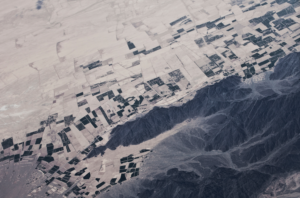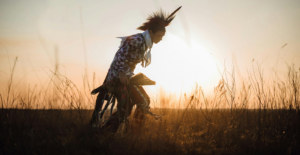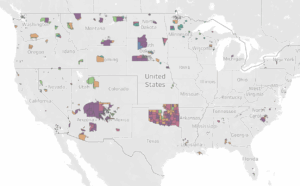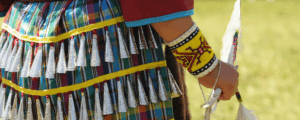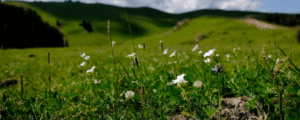In the summer of 2023, the Native Lands Advocacy Project developed a Historic Loss Assessment—articulating lost lives, lands, and resources for the Native Nations of Colorado—for the Truth, Restoration, and Education Commission (TREC) of the People of the Sacred Land. The findings of the TREC can be viewed here in three comprehensive reports.
NLAP was honored to be included in this work, and in the process of developing the Historic Loss Assessment, our team came to realize the power these tools have for correcting historically harmful narratives and advocating for true and equitable pathways forward. This series of blog posts (start here) outlines some of the processes and data tools NLAP developed to complete this assessment. This series is not a comprehensive review of the final TREC assessment; rather, through these posts, we aim to promote the usefulness of such a tool so that these assessments may be completed in more states.
The previous post in this series outlines the various ways the final Historic Loss Assessment mapped illegal settlements and quantified mineral extraction. In this final post of the series, we walk through the last two sections of the assessment: Extermination of Buffalo and Other Significant Losses.
Click the section you're interested in, or scroll to read all three.
Extermination of Buffalo
The buffalo slaughter, also known as the “great buffalo massacre,” refers to the mass killing of North American buffalo between 1700 and 1890. These unjust killings profoundly devastated the health and livelihoods of the Native peoples of the Great Plains, violently disrupting relationships, Native ecologies, and Native economies.
For Colorado’s Historic Loss Assessment, NLAP estimated and visualized losses from the extermination of the southern herd of buffalo using data and maps from William T. Hornaday’s The Extermination of the American Bison and Frank Roe’s The North American Buffalo. Considering the significance of the buffalo to Native culture and food systems, we determined that the best approach for articulating the extent of losses would be to use the upper estimates of buffalo killed. The video below (right) projects the historical data from Hornaday’s map (left) onto contemporary U.S. county boundaries, visualizing what the extermination would have looked like over time.
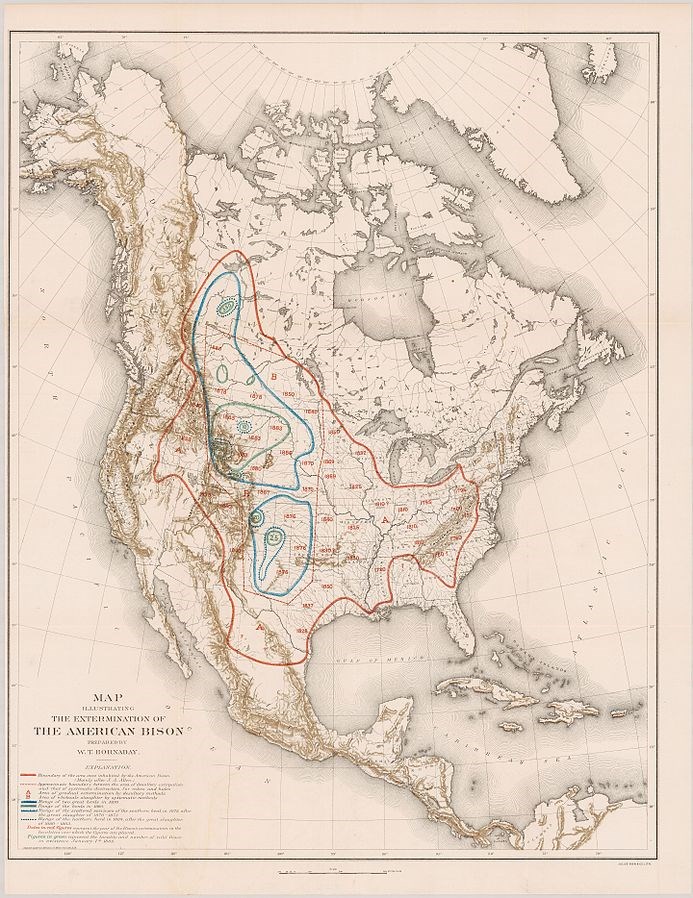
Using Hornaday’s data, NLAP estimated the historic value of slaughtered buffalo in the southern herd at $18,493,650 ($448,856,236 adjusted for inflation, 2023 value). Using Roe’s data, NLAP estimated the historic value of slaughtered buffalo in the southern herd at $136,000,000 ($48,000,000,000 adjusted for inflation, 2023 value). For more information on these estimates see pages 112-117 of the full assessment.
This assessment focused on dollar value as a way to represent the significant economic disruption the buffalo extermination imposed on Native livelihoods. However, we acknowledge that the loss of these precious nonhuman relatives, for Native peoples, is multi-faceted and deeply personal. Though it goes without saying, we recognize that measuring economic value, especially values imposed by settler commerce, falls short of communicating the total devastation of this extermination.
Other Significant Losses
This final section of the Historic Loss Assessment articulated losses related to the destruction of intact habitat and the primary economic systems upheld through habitat connectivity. In including this section, the assessment demonstrates how losses in Colorado truly extended beyond commodity systems and agriculture. Native tribes in Colorado had well-established food and resource production systems that were heavily impacted by habitat loss and the imposition of settler agricultural systems.
Loss of Habitat
While the influx of settlers and trappers increased pressure on game animals in Colorado, the destruction of habitat through plowing the land for agriculture, deforestation for timber products, mining, and urbanization also had a destructive impact on the intact habitat required by various plant and animal communities to thrive.
Intact habitat (or habitat connectivity) refers to the preserved interconnection of landscapes, habitats, and open spaces. Preserving intact habitats promotes and safeguards the biodiversity of native species by ensuring that their natural spaces are unbroken and minimally disturbed by modern infrastructure. Using ESRI’s Intact Habitat Core Layer, NLAP calculated the acres of fragmented and destroyed habitat per land cession in Colorado.
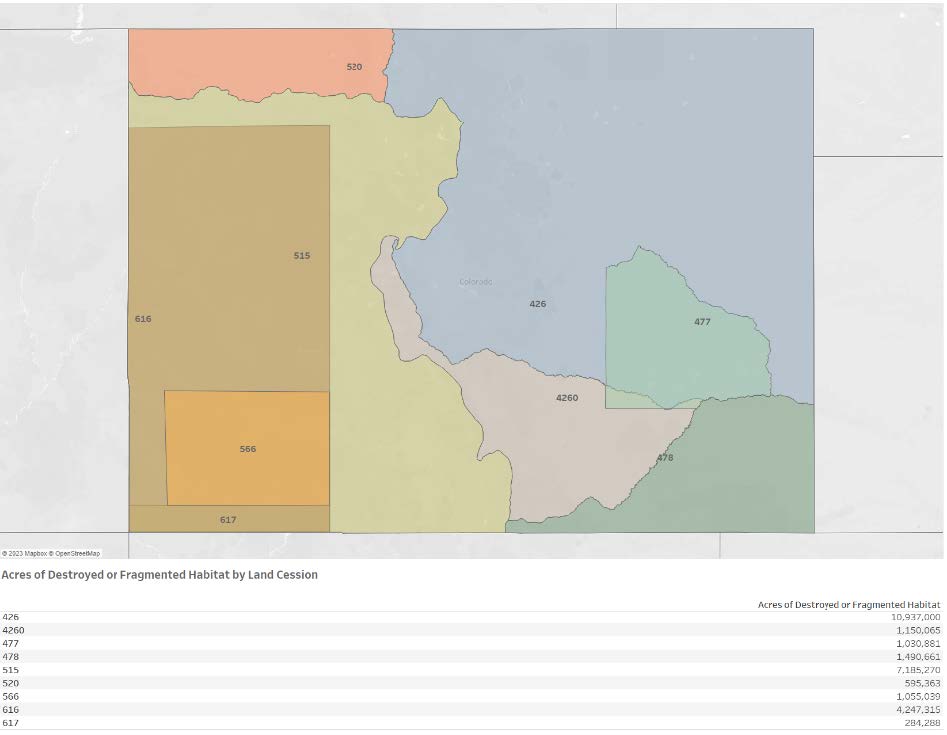
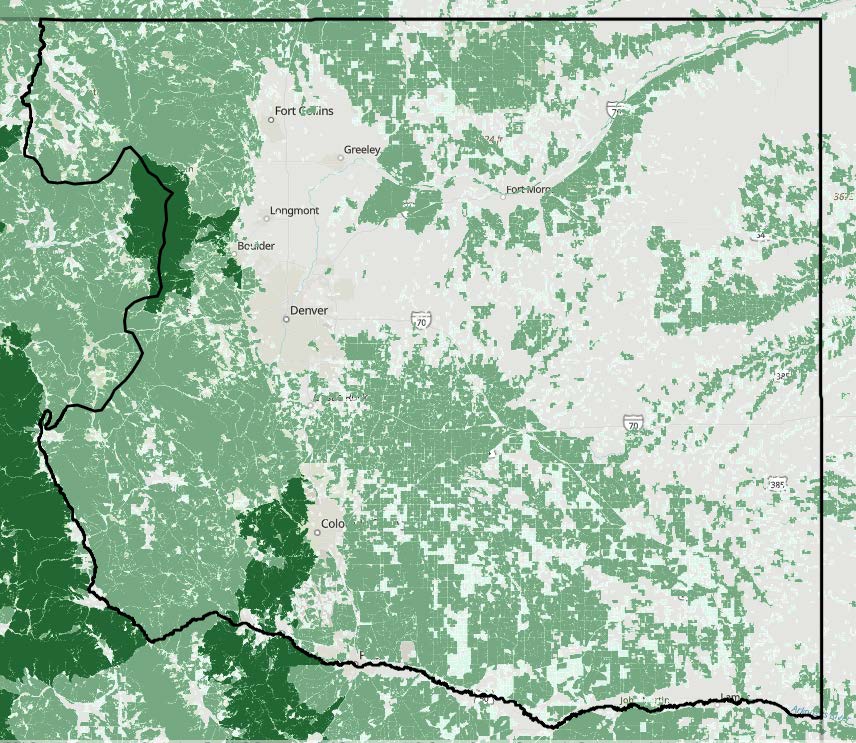
Other Losses
The powerful potential of the Historic Loss Assessment is that it is tailored to the specific state/region it represents. While the extermination of buffalo was a vital loss to cover for the Native Nations of Colorado, Native Nations in other regions have been impacted by other unique ecological, cultural, and economic losses due to settler colonialism.
NLAP has always been at the forefront of developing new and cutting-edge data tools to better represent the lived realities of Native communities in the U.S., and we look forward to continuing to explore how we can use public data to help quantify the losses experienced by Native Nations. The Historic Loss Assessment and its various tools can be a powerful way for tribal communities to articulate the vast and multifaceted ways that settler colonialism has impacted, and continues to impact, the well-being of their communities since the time of first contact.
Interested in developing a Historic Loss Assessment for the Native Nations in your region, or working with NLAP to develop a new data tool? Contact us for a free initial consultation!
This blog post is part of a series that documents our processes in creating a Historic Loss Assessment for the Truth, Restoration, and Education Commission (TREC) of the People of the Sacred Land. To view the landing page for the rest of the series, click here.
Written by Emma Scheerer

